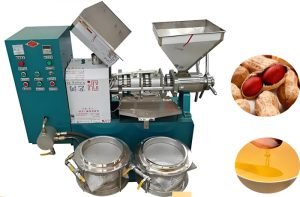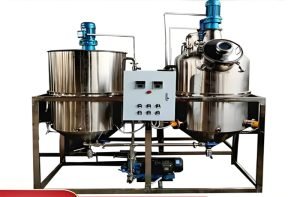Soybean oil production line
Soybean oil is one of the most widely used vegetable oils in the world. For business owners, this huge demand means a fantastic opportunity for profit. But starting a soybean oil production line can feel like a huge challenge. There are many steps and many machines. We are Fude Machinery. We are a direct manufacturer that specializes in building these exact systems. We have helped entrepreneurs and large companies set up successful oil plants from scratch.
Table of Contents
- Definition of soybean oil press
- Soybean oil press production line operation steps
- How is soybean oil extracted?
- Analysis of common oils in oil presses
- Frequently Asked Questions about Soybean Oil Press

Definition of soybean oil press
Soybean oil press production line is a fully automated edible oil processing system integrating raw material pretreatment, pressing/leaching, refining, filling and storing, which transforms soybean raw material into high-quality soybean oil conforming to the national standard by physical or chemical methods, and is widely used in small and medium-sized oil mills, medium-sized processing factories, and large-scale oil and grease enterprises.
Soybean oil press production line operation steps
- Pre-treatment section
- Cleaning: Remove soil, sand and metal impurities through screening, wind and magnetic separation equipment to ensure the purity of raw materials (net material containing impurities ≤ 0.1%).
- Crushing: Crush the soybeans into 4-6 petals, control the powder degree (no more than 10% through 20-mesh sieve), to avoid the formation of clusters or oil.
- Softening: use the softening pot at 55-65 ℃ to adjust the moisture to 10.5%-11.5%, to improve the elasticity and plasticity.
- Rolling embryo: rolling thin embryo sheet with thickness ≤ 0.35mm, requiring small powder degree and no oil leakage.
- Steaming and stir-frying: Reduce the moisture of embryo flakes to 1.5%-2.8% by closed steamer and stir-fryer, and increase the temperature to 100-110℃ to promote protein denaturation and improve the oil yield.
- Screw Press:
- Principle: The screw rotates and pushes the material embryo, the friction under high pressure generates heat, destroys the colloid structure, and the oil flows out from the oil discharge slit.
- Advantage: Physical pressing retains nutrients, oil yield 18%-20%, suitable for high-end oil products.
- Representative model: 100 type automatic screw oil press, processing capacity 150-250kg/h, integrated automatic temperature control system, easy to operate.
- Solvent Leaching System:
- Principle: Adopting alkane solvent to extract oil, the residual oil rate can be as low as 1%, suitable for large-scale production.
- Advantage: high oil yield, but need subsequent refining to remove solvent residues.
- Refining steps
- Degumming: add hot water or electrolyte solution to remove colloidal impurities such as phospholipids.
- Deacidification: Neutralize free fatty acid by alkali refining or distillation, alkali concentration 12%-13%.
- Decolorization: adsorption of pigment by activated white clay, oil temperature ≤105℃, operating pressure 2.5-4.0kPa.
- Deodorization: high temperature steam distillation (≤230℃) to remove odor components, operating pressure ≤0.4kPa.
- Filling and Storage
- Automated filling equipment ensures precision and hygiene, while advanced storage systems maintain oil stability.
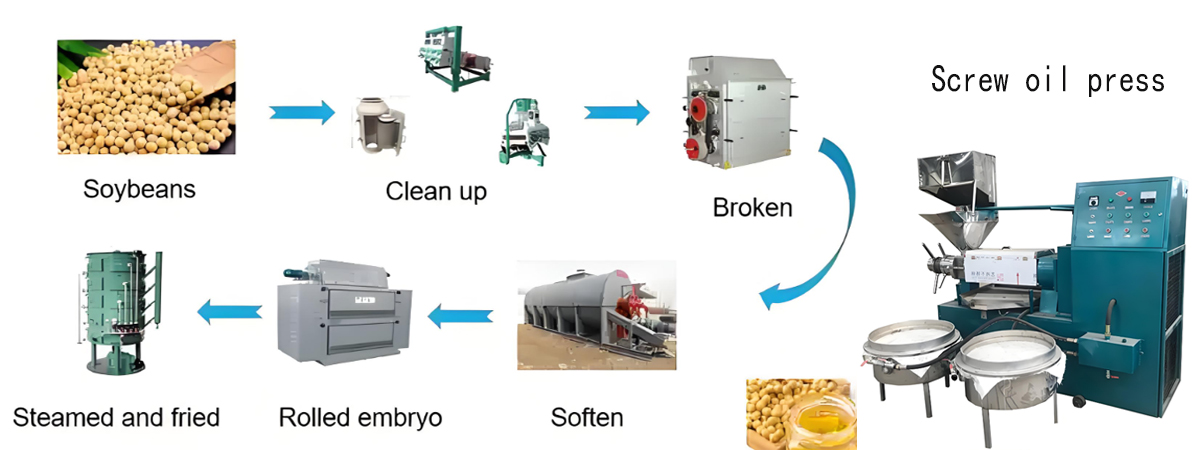
How is soybean oil extracted?
You can extract oil from soybeans using two main methods: mechanical pressing or solvent extraction.
This is one of the biggest decisions you will make when designing your soybean oil production line. The choice depends on the size of your operation. For small-scale plants, pressing is common. For medium to large-scale industrial plants, solvent extraction is the standard choice because it is much more efficient.
As a manufacturer, we provide equipment for both methods. Mechanical pressing uses a powerful screw press, a soybean oil extraction machine, to physically squeeze the oil out of the prepared flakes. It is a simpler process. Solvent extraction uses a food-grade chemical (usually hexane) to wash the oil out of the flakes. It is a more complex chemical process, but it gets almost all the oil out. We help our clients choose the method that best fits their budget, capacity, and business goals.
| Feature | Mechanical Pressing | Solvent Extraction | What This Means for Your Business |
|---|---|---|---|
| Oil Yield | Lower (Residual oil in cake: 6-8%) | Highest (Residual oil in meal: <1%) | Solvent extraction gives you significantly more oil to sell from the same amount of beans. |
| Initial Cost | Lower | Higher | Pressing is cheaper to start, but less profitable in the long run for large volumes. |
| Scale | Best for Small Scale (<30 TPD) | Best for Medium to Large Scale (>30 TPD) | Your daily processing capacity is the main factor in this decision. |
| Complexity | Simple Mechanical Process | Complex Chemical Process | Solvent |
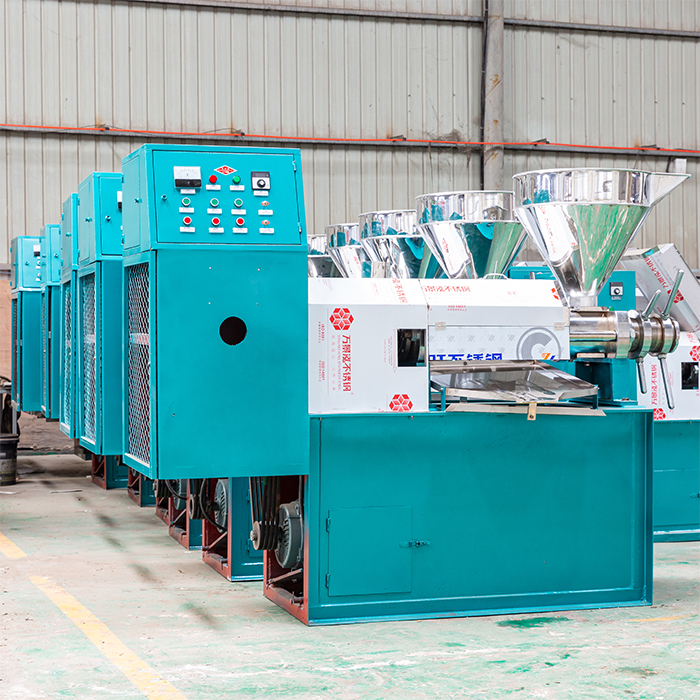
Screw oil press
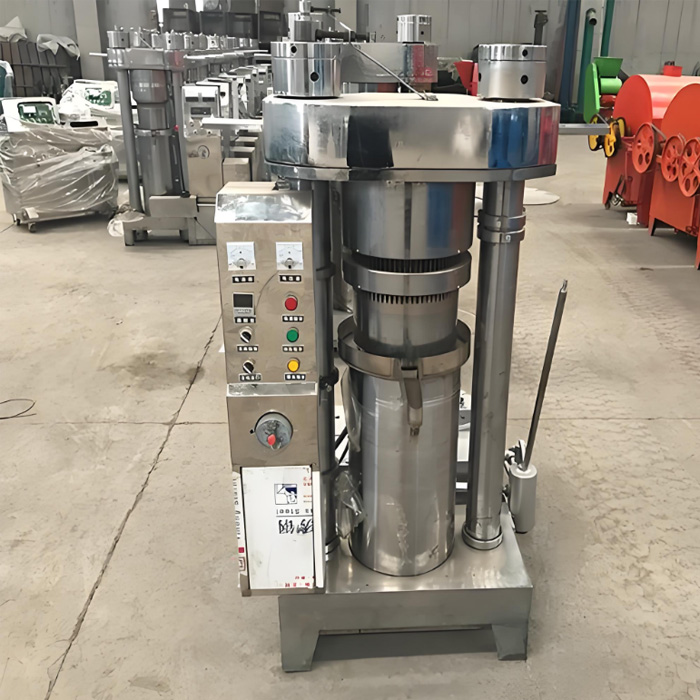
Hydraulic Oil Press
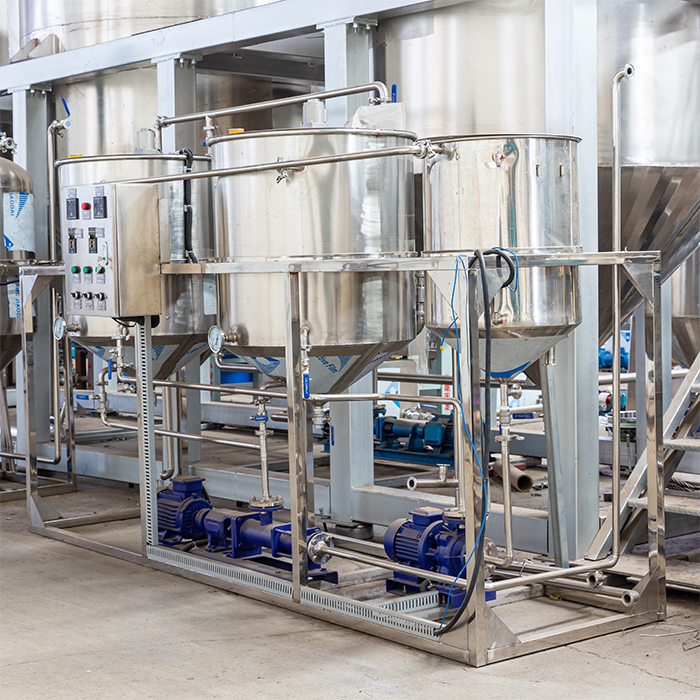
refining equipment
Analysis of common oils in oil presses
Screw oil press is a kind of edible oil processing equipment that operates on the principle of hydraulic full-automatic, and it pushes the material billet through the rotation of the screw shaft to realize continuous and efficient oil and grease pressing. Its core advantage lies in its compact structure, easy operation and high oil yield, which is widely used in the scenarios of individual households, small-scale oil mills and agricultural cooperatives, supporting the pressing of more than 30 kinds of oil crops, such as peanuts, soybeans, rapeseed, oil sunflower and so on.
- Soybean: oil yield is about 12%-18%, and the crushed soybean cake can be used as feed or protein raw material.
- Canola (rapeseed): oil yield 30%-45%, is the main source of rapeseed oil.
- Peanut: oil yield 40%-50%, peanut oil has strong aroma and high market value.
- Cottonseed: oil yield 10%-20%, need to be pressed after detoxification treatment, cottonseed oil can be used for industry or food.
- Sunflower seed (sunflower): oil yield 25%-40%, sunflower oil is rich in unsaturated fatty acids.
- Sesame: oil yield 45%-55%, sesame oil (sesame oil) has a unique flavor and is suitable for cold pressing.
- Flaxseed: oil yield 30%-40%, flaxseed oil is rich in α-linolenic acid, suitable for healthy cooking oil.
- Tea seeds: oil yield 20%-30%, tea oil is high-end cooking oil, storage resistance.
- Walnut kernel: oil yield 60%-70%, walnut oil is rich in nutrition, suitable for infants and children.
- Almond: oil yield 40%-50%, almond oil can be used in food or cosmetics.
- Corn germ: 25%-30% oil yield, corn germ oil is one of the high-end edible oils.
- Wheat germ: oil yield 8%-12%, wheat germ oil is rich in vitamin E, used in health care products.
- Peanut shell/peanut red coat: although the oil yield is low, trace oil or fiber can be extracted by special process.
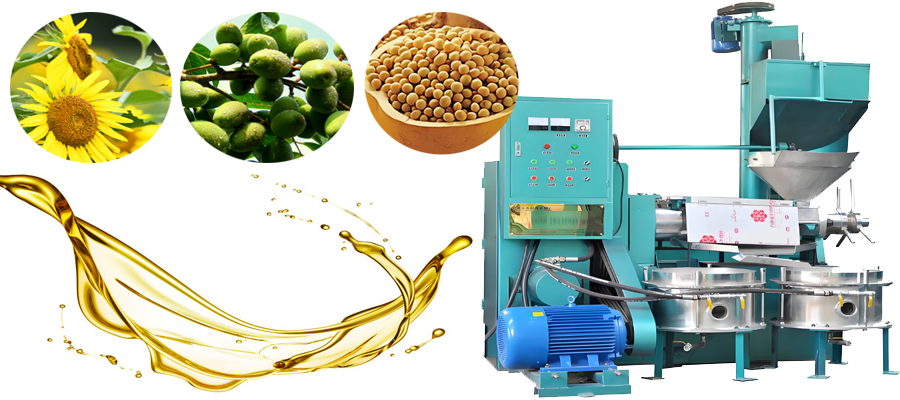
Frequently Asked Questions about Soybean Oil Press
Question 1: What is the typical oil yield from soybeans?
The oil content in soybeans is around 18-22%. With an efficient soybean oil production line using solvent extraction, you can achieve a very high oil yield, often extracting over 98% of the available oil. This makes it a highly efficient process.
Question 2: What do I do with the leftover soybean meal?
Soybean meal is a highly valuable co-product. It is rich in protein and is a primary ingredient in animal feed for livestock, poultry, and aquaculture. Selling the meal creates a significant secondary revenue stream for your business.
Question 3: How much does a soybean oil production line cost?
The cost varies greatly depending on the capacity (tons per day) and the technology used (pressing vs. solvent extraction). As a direct manufacturer, we provide custom solutions. The best way to get an accurate number is to contact us for a detailed quotation based on your specific needs.
Related recommendations
-
Peanut oil press production line
175Peanut oil is loved around the world for its wonderful nutty flavor and high-smoke point. This popularity makes it a fantastic business opportunity. Starting a peanut oil production line is a direct path to entering this profitable market. We are...
View details -
edible oil refining equipment
1197A refining machine is a mechanical device that removes impurities from raw materials through physical or chemical methods, thereby enhancing the purity and quality of the product. It is widely used in various industries such as edible oil, rub...
View details
 Oil Press Equipment and Oil Refining Machinery for Sale – Start Your Oil Press Business
Oil Press Equipment and Oil Refining Machinery for Sale – Start Your Oil Press Business
